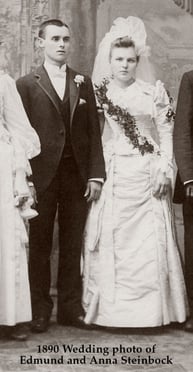 My Grandpa, Edmund A. Steinbock, Sr. was born in Louisville in 1894. His father, Edmund, had immigrated around 1882 to Louisville from Salmuenster, a small town near Frankfurt, Germany at age 17. His mother, Anna Marie Schmitt, was born in Louisville where they married in 1890.
My Grandpa, Edmund A. Steinbock, Sr. was born in Louisville in 1894. His father, Edmund, had immigrated around 1882 to Louisville from Salmuenster, a small town near Frankfurt, Germany at age 17. His mother, Anna Marie Schmitt, was born in Louisville where they married in 1890.
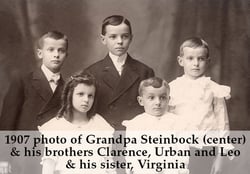 In October, 1893 the brand new Manual Training High School was completed and equipped in Louisville by the generous donation of $35,000 by a prominent citizen, Mr Alfred Victor Du Pont, who was much interested in the manual movement. This allowed 500 students to receive daily instruction and actual shop experience in mechanical drawing, foundry casting, blacksmithing, electricity, metal turning and wood joinery. Of course, the students also had plenty of class time as well in English, Latin or German, Mathematics, Physics and Chemistry.
In October, 1893 the brand new Manual Training High School was completed and equipped in Louisville by the generous donation of $35,000 by a prominent citizen, Mr Alfred Victor Du Pont, who was much interested in the manual movement. This allowed 500 students to receive daily instruction and actual shop experience in mechanical drawing, foundry casting, blacksmithing, electricity, metal turning and wood joinery. Of course, the students also had plenty of class time as well in English, Latin or German, Mathematics, Physics and Chemistry.
Grandpa attended Manual, graduating in the class of 1913. The inside of his class ring bears the initials “LG”…the same as my grandmother, Lena Gensheimer. Interestingly, my father, Edmund Jr, also graduated from Du Pont Manual in 1939 and the school still turns out excellent graduates in Louisville, but in a new location and without a manual training focus.

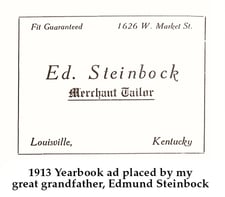
At the time, Louisville had more than 30 companies either distilling or aging Bourbon in white oak barrels or blending and packaging it for sale throughout the U.S. and other markets. At the same time, there was a growing temperance movement attempting to restrict or eliminate all alcoholic beverages, considering them the source of all forms of vice and family instability.
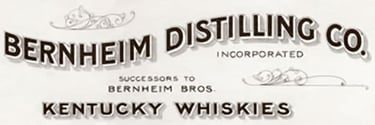
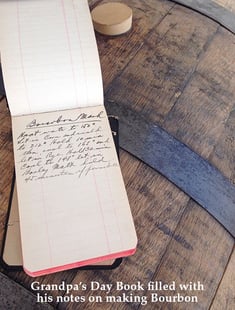 By 1918, Grandpa was employed in the Accounting Department at Bernheim Distillery, originally founded and operated by two other German immigrants, Isaac and Bernard Bernheim. It was here that Grandpa got his “Bourbon education”, learning how the grain bill was varied to get more distinctive flavors and how the best strains of the “mother” yeast were cultured and added to the mash, then fermented at the optimal temperature to convert the starches to alcohol. His Day Book from that era has been passed down in the family, along with original labels of his own personal Kentucky whiskey, Ye Olde Panther Pee.
By 1918, Grandpa was employed in the Accounting Department at Bernheim Distillery, originally founded and operated by two other German immigrants, Isaac and Bernard Bernheim. It was here that Grandpa got his “Bourbon education”, learning how the grain bill was varied to get more distinctive flavors and how the best strains of the “mother” yeast were cultured and added to the mash, then fermented at the optimal temperature to convert the starches to alcohol. His Day Book from that era has been passed down in the family, along with original labels of his own personal Kentucky whiskey, Ye Olde Panther Pee.
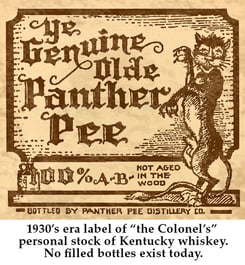
By 1919, America had entered World War I and mobilized over 4 million young men into an expeditionary force under command of Army General John J. “Black Jack” Pershing. With all those young men away from the voting booths, it was therefore relatively easy for the Temperance Movement to get Congress to pass the Prohibition Amendment (Volstead Act) over President Wilson’s veto and to get it ratified by the States. By then, Grandpa was engaged to Lena and had begun his career search outside the liquor trade as I recounted in an earlier blog, “Whip Mix, Looking Back to 1919 and Before”, September 2014.
How providential that Grandpa’s skills in distilling and practical training in foundry casting had a similar grounding as that involved in blending natural powders like Plaster of Paris and silica sands to make a dental grade investment for lost wax casting. And the same machining processes taught him at Manual Training High School were helpful in making the Spatulator, Burnout Oven and Air Pressure Casting Machine that encompassed the original line of Whip Mix products as introduced in 1919 by Grandpa and his brothers.
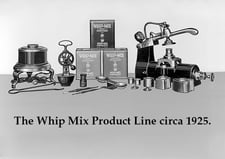
During Prohibition, Grandpa’s supply of Bourbon became more and more scarce. At first, he was able to find a source of emptied oak bourbon barrels. Using a steam generator, as much as two gallons of the residual bourbon could be recaptured out of the wood barrel itself. But eventually, like many others, he and his family resorted to requesting a prescription for medicinal spirits. This allowed adults with a “nervous condition” to purchase two pints per month from a neighborhood apothecary. It also allowed seven distilleries holding a special federal license, to continue to legally keep their distillery operating with a reduced staff. Bernheim was one of those lucky seven distilleries!
According to family lore, this period was also when my Grandma developed severe hay fever, requiring an August stay in Northern Michigan where the air was free of ragweed pollen. Coincidentally, they stayed in Petoskey, a town whose proximity to Canada made Canadian whiskey easily available and transportable back home in the family Sedan. Not surprisingly, Grandma’s hay fever miraculously ended about the same time as Prohibition.
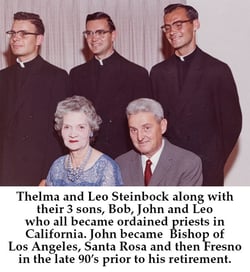 By the late 1930’s, the Federal government under the FDR Administration was helping the economy recover and so Whip Mix products were again being sold by dental dealers throughout the USA. Grandpa’s youngest brother, Clarence, had moved with his wife, Thelma, and three young sons to Altadena, California where he sold similar products under the “Leo’s Dental Products” name. His “Leo’s Red Outer Investment” was a dead ringer for Beauty Cast Investment.
By the late 1930’s, the Federal government under the FDR Administration was helping the economy recover and so Whip Mix products were again being sold by dental dealers throughout the USA. Grandpa’s youngest brother, Clarence, had moved with his wife, Thelma, and three young sons to Altadena, California where he sold similar products under the “Leo’s Dental Products” name. His “Leo’s Red Outer Investment” was a dead ringer for Beauty Cast Investment.
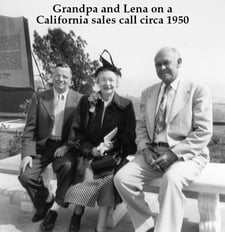 In the 1950’s, Grandpa & Grandma made several train trips to California, visiting such dental dealers as Guggenheim Brothers and Pearson Dental in Los Angeles and Wynman Brown Dental in San Francisco. Years later in the early 1980’s Wilbur Wynman recounted to me about one of those visits he had from “the Colonel” as Grandpa was known.
In the 1950’s, Grandpa & Grandma made several train trips to California, visiting such dental dealers as Guggenheim Brothers and Pearson Dental in Los Angeles and Wynman Brown Dental in San Francisco. Years later in the early 1980’s Wilbur Wynman recounted to me about one of those visits he had from “the Colonel” as Grandpa was known.
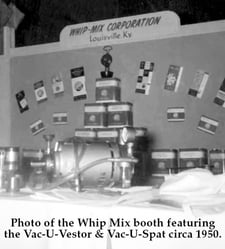 It happened to be on a day when there was some painting being done inside the store. Grandpa hung up his coat, removed his tie, rolled up his sleeves and helped Wilbur and the others put on a coat of fresh paint. Afterwards, all of them, plus my Grandma shared a bottle of Kentucky’s finest as Wilbur recalled. And I am sure that Grandpa extolled the properties of our Cristobalite Inlay investment and our new “electric” Vac-U-Vestor and Vac-U-Spat.
It happened to be on a day when there was some painting being done inside the store. Grandpa hung up his coat, removed his tie, rolled up his sleeves and helped Wilbur and the others put on a coat of fresh paint. Afterwards, all of them, plus my Grandma shared a bottle of Kentucky’s finest as Wilbur recalled. And I am sure that Grandpa extolled the properties of our Cristobalite Inlay investment and our new “electric” Vac-U-Vestor and Vac-U-Spat. 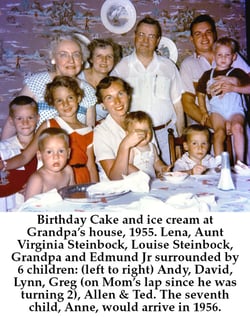
With the resurgence of Bourbon as a uniquely American type of whiskey, it is possible that the Colonel’s special recipe may again become available to dedicated Whip Mix users. Meanwhile, please consume your favorite beverage responsibly, thinking kindly (as Grandpa ended all his letters) of us as Your Kentucky Friends…the Whip Mix folks.







.png)

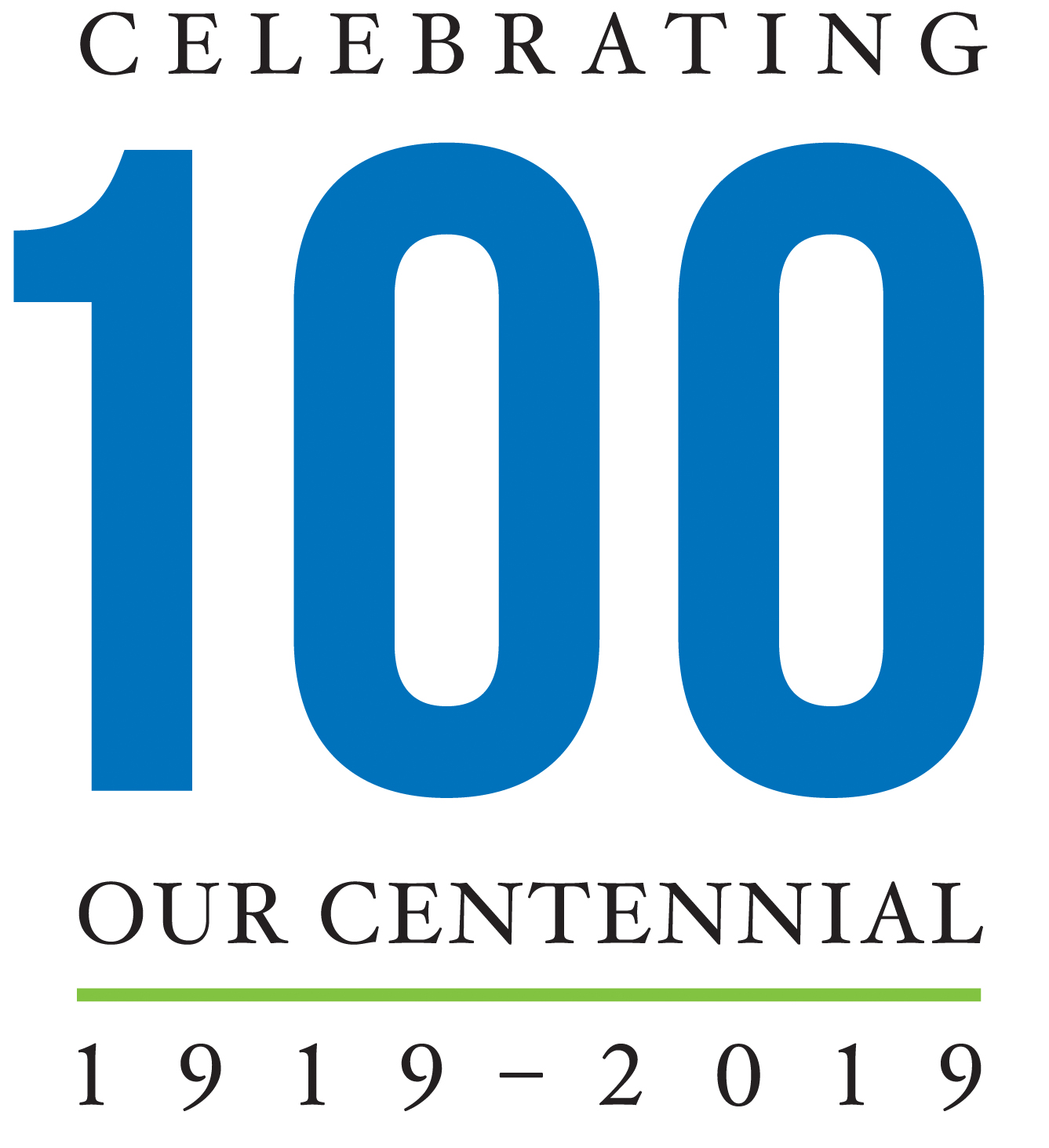
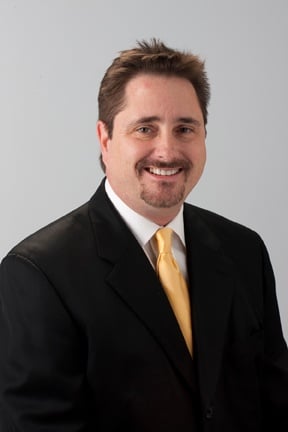
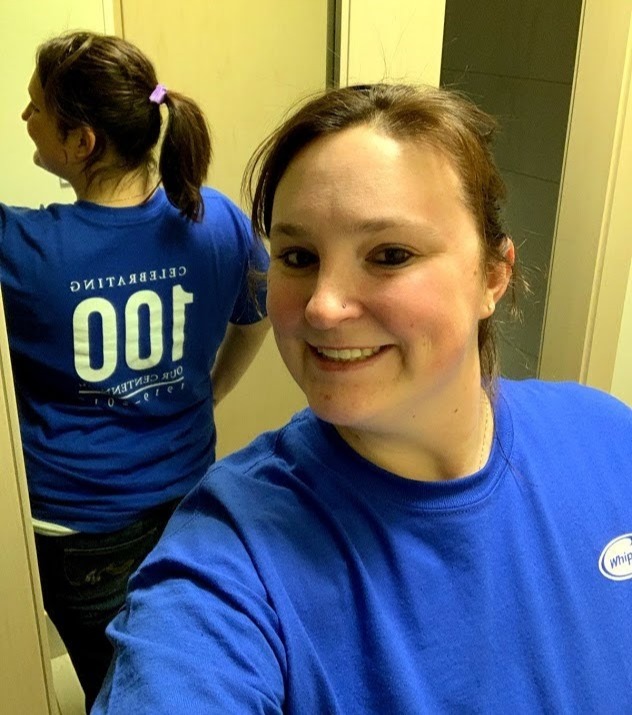
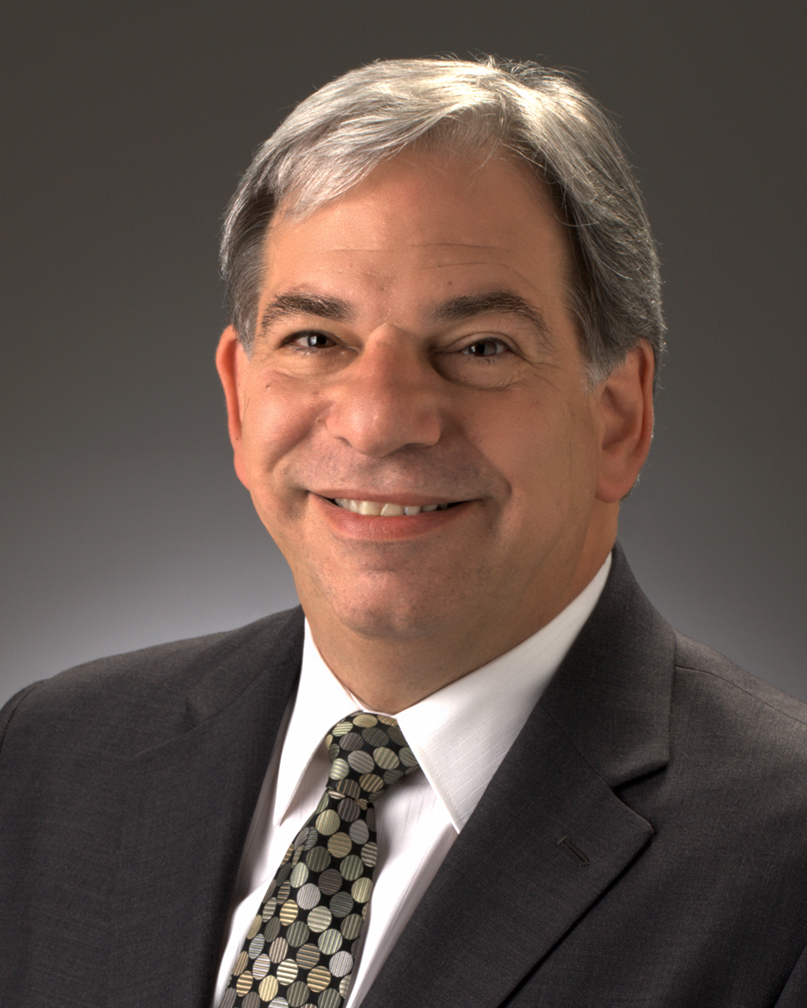
Leave a comment